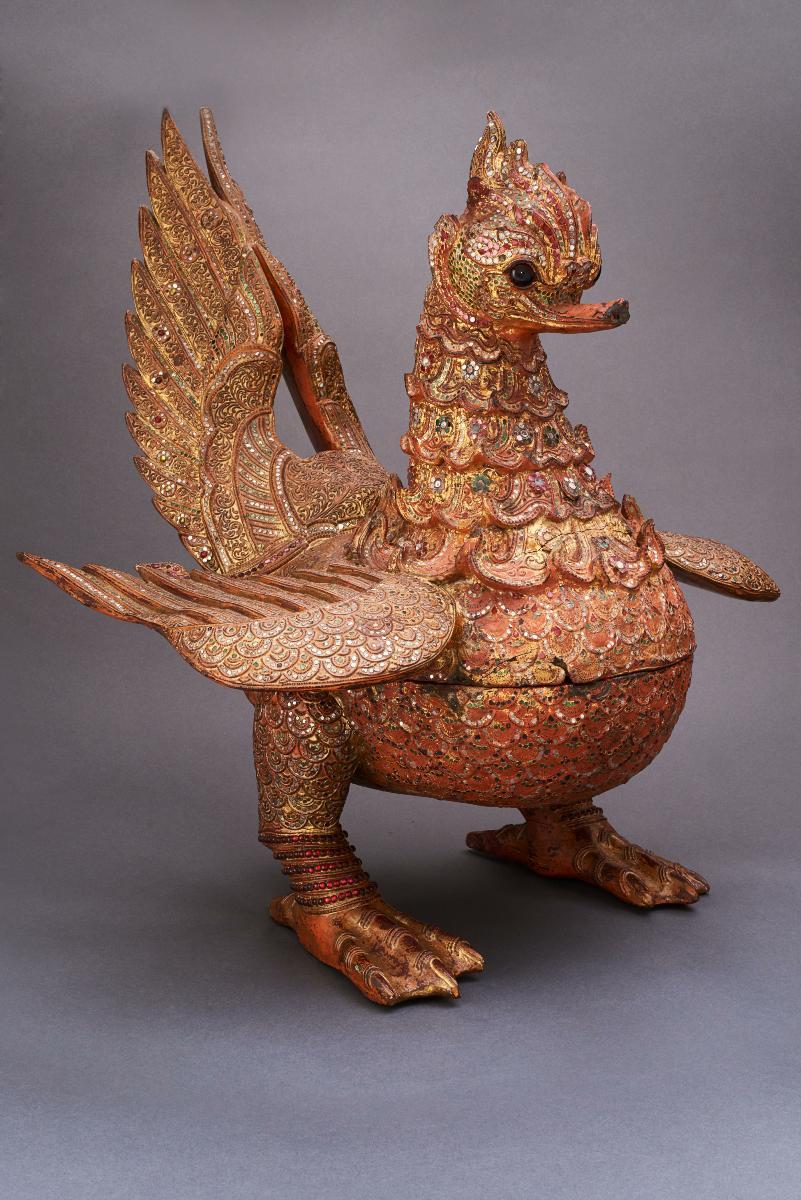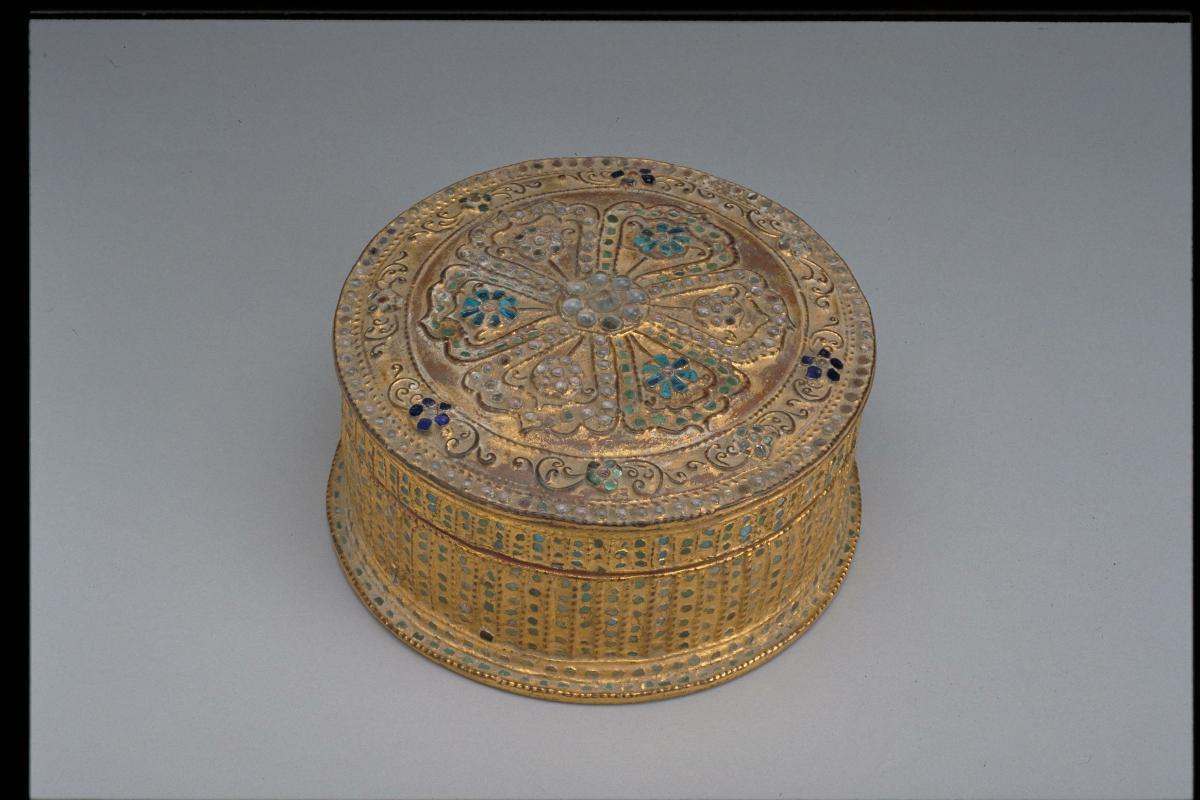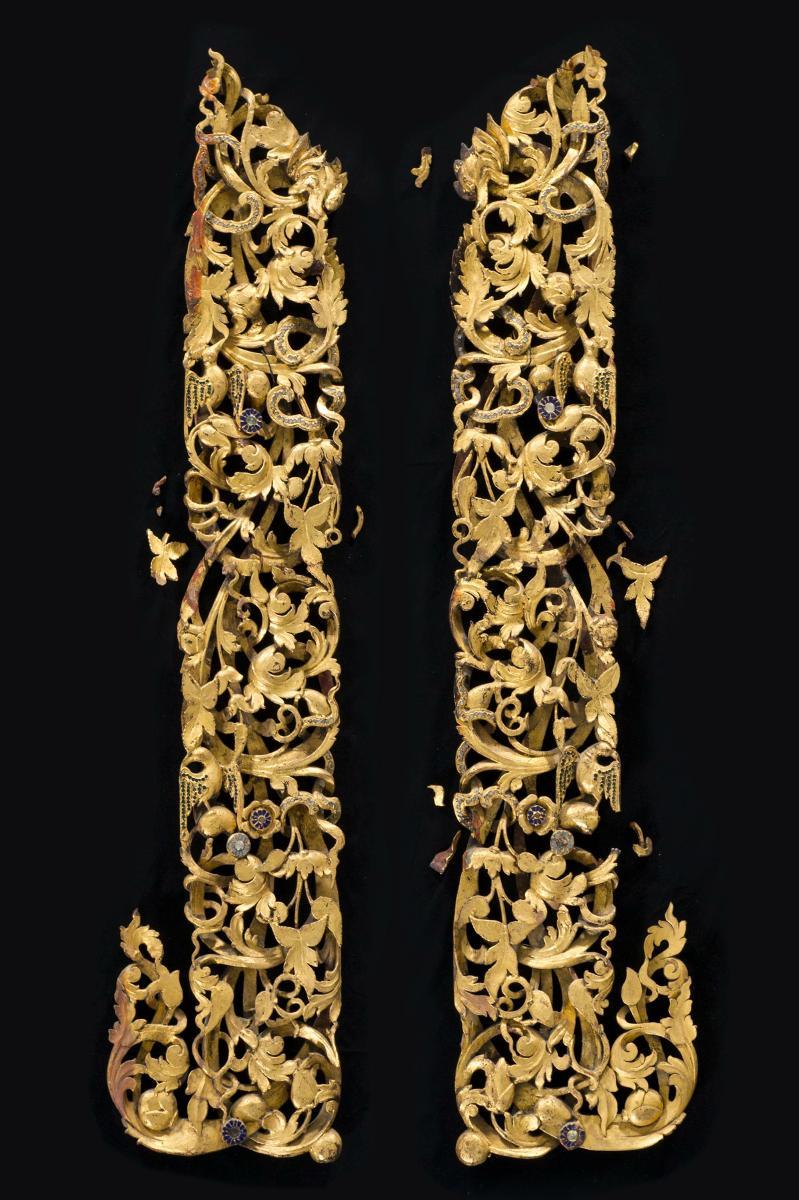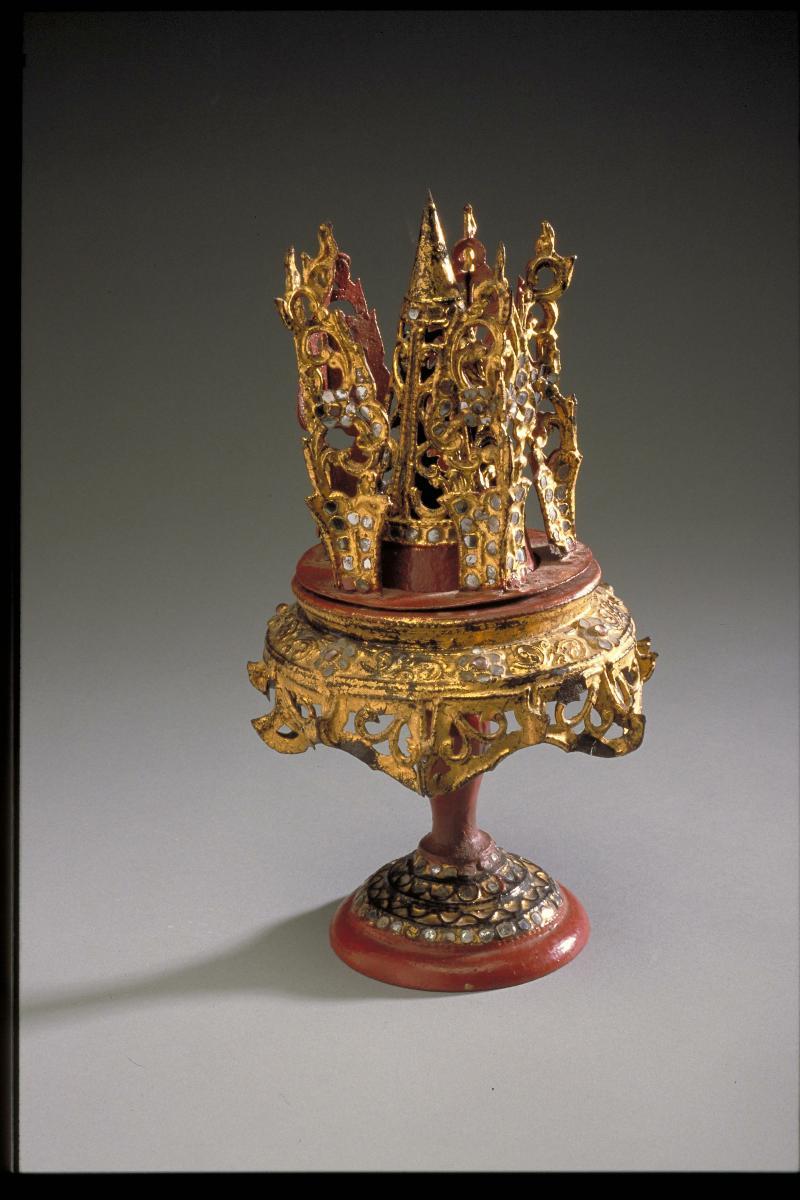This large, ceremonial container is in the shape of a hintha bird (also known as hamsa). The top half of the body or lid is decorated with relief-moulded lacquer, which is covered in gold and inlaid with glass and mirror fragments. The opulence displayed in this vessel and the style of decoration is exemplary of the so-called Mandalay style of the Konbaung period (1599–1752). Such extravagance was a result of the introduction of Indian techniques such as glass inlay, European materials such as mirror and glass, and an aesthetic taste made popular by the Siamese courts. This shows the sophistication of Burmese lacquerwork and the prolific use of this material and technique in Burmese culture.















